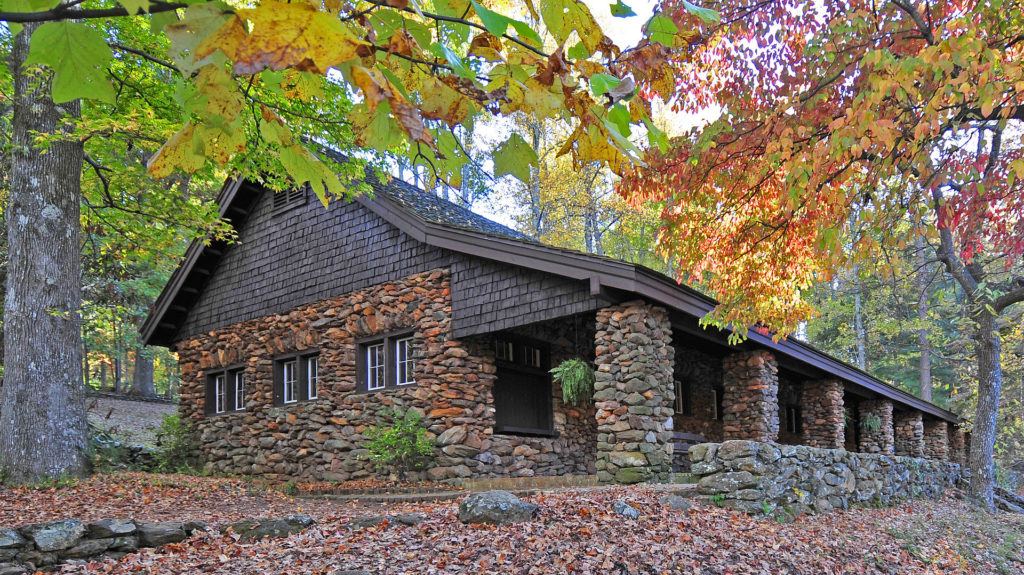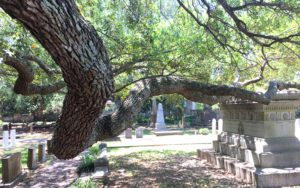
This looks like a pretty interesting, rustic place. Where is it? Send your guess about the location of this photo to feedback@statehousereport.com. And don’t forget to include your name and the town in which you live.
Our previous Mystery Photo
 The subject of our June 7 mystery, “This one could be tough,” wasn’t too tough for history buffs who read Statehouse Report. The photo showed the cemetery of St. Philip’s Church on Church Street in Charleston. It showed a big tomb marked “Calhoun,” but was for John Caldwell Calhoun. His more famous grandfather, former Vice President John C. Calhoun, is buried nearby.
The subject of our June 7 mystery, “This one could be tough,” wasn’t too tough for history buffs who read Statehouse Report. The photo showed the cemetery of St. Philip’s Church on Church Street in Charleston. It showed a big tomb marked “Calhoun,” but was for John Caldwell Calhoun. His more famous grandfather, former Vice President John C. Calhoun, is buried nearby.
Three cheers for George Graf of Palmyra, Va.; Jim Pfeiffer of Greenwood; Addison Ingle of Charleston; Dale Rhodes of Richmond, Va.; Jean Prothro, Jay Altman and Donna McGreevy, all of Columbia; Bill Segars of Hartsville; Charles E. Davis of Aiken; Philip Cromer of Beaufort; Frank Bouknight of Summerville; Elaine Huff-Lowe of Inman; David Lupo of Mount Pleasant; Fairey Mock of Chapin; and Greg Nowell of West Union.
Lupo shared that he identified the cemetery by happenstance: “I happened to read this week’s Statehouse Report while waiting for the start of a Piccolo Spoleto concert in St. Philip’s Church in Charleston. After the concert, I was able to walk across the street to compare the mystery photo to the tomb of John C. Calhoun in St. Philip’s west cemetery. A few points of interest: Calhoun, a Calvinist, attended the Huguenot church, not St. Philip’s; and during the Civil War, his remains were moved to an unmarked grave in the east cemetery lest the Union soldiers find and desecrate his grave.”
Bouknight and others noted that the tomb shown in the photo was of Calhoun’s grandson, John Caldwell Calhoun (1848-1918). Bouknight wryly added, “Most important historical fact was he was a Gamecock, class of 1862.”
Prothro said, “Buried here are revolutionaries, politicians, confederates and artists. Among them are Col. William Rhett, known as the “Scourge of the Pirates,” charged with bringing the murderous Blackbeard and Stede Bonnet to justice. Edward Rutledge, a signer of the Declaration of Independence, Charles Pinckney, a signer of the Constitution, and John C. Calhoun, a U.S. senator and vice president of the U.S. also are interred here.
Cromer shared other notables buried in the cemetery include Other notables buried in the churchyard include Robert Smith (1st Bishop of SC and 1st President of the College of Charleston); ; Christopher Gadsden (founder and leader of the Charleston Sons of Liberty, delegate to the 1st and 2nd Continental Congresses, and designer of the Gadsden Flag); Rebecca Motte (heroine of the Revolution); Alexander Garden (Scottish Anglican priest and rector of St. Philip’s Church in 1700’s); and DuBose Heyward (American author who wrote “Porgy” which the Gershwin brothers turned into “Porgy and Bess”).
Graf added, “According to genealogytrails.com, known as the lighthouse church because a light placed in its steeple helped guide ships to port, St. Philip’s was constructed 1835 to 1838. Charlestonians are buried in the graveyard next to the church. Non-Charlestonians, including John C. Calhoun, are buried on across the street.”
- Send us a mystery: If you have a photo that you believe will stump readers, send it along (but make sure to tell us what it is because it may stump us too!) Send to: feedback@statehousereport.com and mark it as a photo submission. Thanks.
















 We Can Do Better, South Carolina!
We Can Do Better, South Carolina!